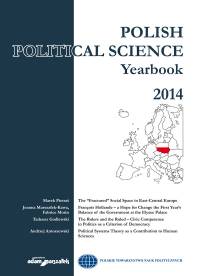THE DESTRUCTION AND TRANSFER OF ORTHODOX CHURCH PROPERTY IN POLAND, 1919-1939
THE DESTRUCTION AND TRANSFER OF ORTHODOX CHURCH PROPERTY IN POLAND, 1919-1939
Author(s): Antoni MironowiczSubject(s): Political history, Interwar Period (1920 - 1939), Historical revisionism, Inter-Ethnic Relations
Published by: Wydawnictwo Adam Marszałek
Keywords: Orthodox Church; Poland; Poland 1919–1939
Summary/Abstract: The most difficult period that the Polish Autocephalous Church of the 2nd Polish Republic experienced was in 1938 when, by the decision of administrative authorities, over 127 sacral buildings in Khelm region and Podlachia were pulled down. The third transfer stage took place from 1937 to 1939 and, for the most part, took the form of demolishing Orthodox churches. (It should be noted that the demolition of Orthodox churches happened throughout the whole period of the existence of the Second Polish Republic.) The churches which were destroyed were those which were the symbols of the Russian Tsar’s reign. Over thirty Orthodox churches were destroyed, including the cathedral in Saski Square in Warsaw, the Sts. Cyril and Methodius cathedral in Khelm and the Resurrection cathedral in Bialystok. The demolition of these Orthodox churches – regarded as symbols of Russian rule – was spontaneous and often irrational. Nevertheless, it never happened on a massive scale. Only in 1938 did a programme of destroying Orthodox churches emerge as a distinct element of the Polonisation effort. This programme was initiated by the government itself. The official reason was that those churches were not needed, dilapidated, or had been built as a result of Russifi ation in the past. However, it appears that the reason was to weaken the Belarusian and Ukrainian national minority movement through closing parishes and active Orthodox churches. The “pacification: of parishes in 1937 started in the Lublin region. First, a kind of social movement for the “propagation of Polish values and traditions” was created by the polish local authority. Then the army and police persecuted the Orthodox Church and people in order to convert them to Roman Catholicism. The demolition of Orthodox churches was conducted from the second half of May until the first half of July 1938. The actions were taken up by the local administration and co-ordination committees with help from the army and police in a hostile, anti-Orthodox atmosphere. To this end, the government used youth, army sappers, worker brigades, and even prisoners. Administrative and material measures were used to pressure the Orthodox who were blackmailed and threatened while their churches, which often served thousands of faithful, were destroyed. In most cases, the Orthodox community made no attempt to actively resist the demolitions. They prayed and protested, but were unable to oppose such an officially organised action. The transfer and destruction of Orthodox Church property naturally weakened the position of the Orthodox Church for the campaign limited its priestly activities, in turn creating the very conditions for transfer, the main goal of the state’s policy. Many Orthodox faithful started attending Roman Catholic churches when they had no church or parish of their own. Nonetheless, the threat to the property of the Orthodox Church brought the faithful, clergy, and church hierarchy closer together. Anti-government and anti-Polish attitudes began to grow in the Orthodox community. The result may be seen in the Khelm, Podlachia, and Volhynia regions during the Second World War.
Journal: Polish Political Science Yearbook
- Issue Year: 43/2014
- Issue No: 1
- Page Range: 405-420
- Page Count: 16
- Language: English

